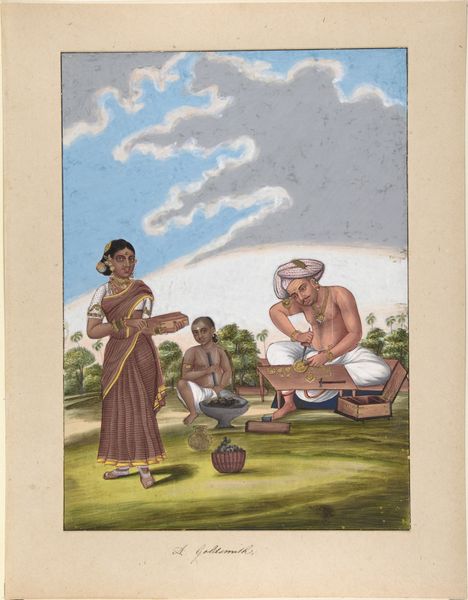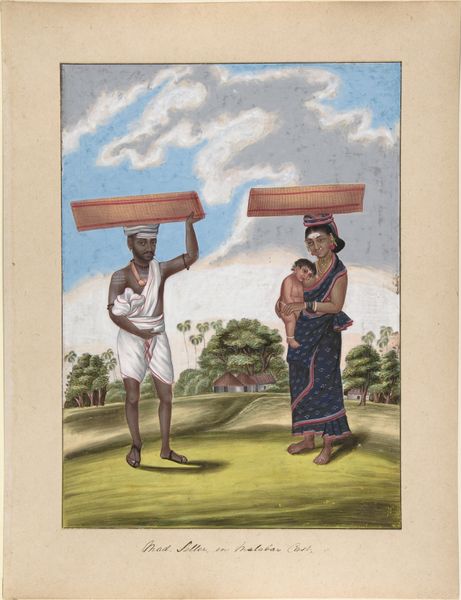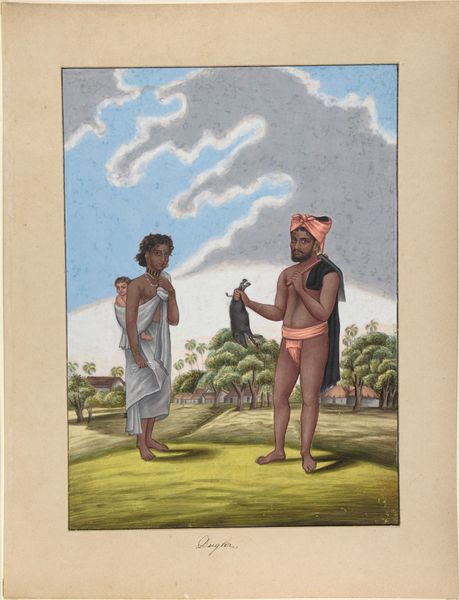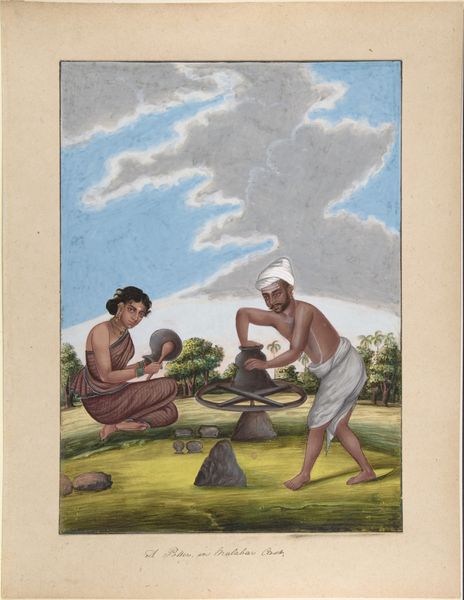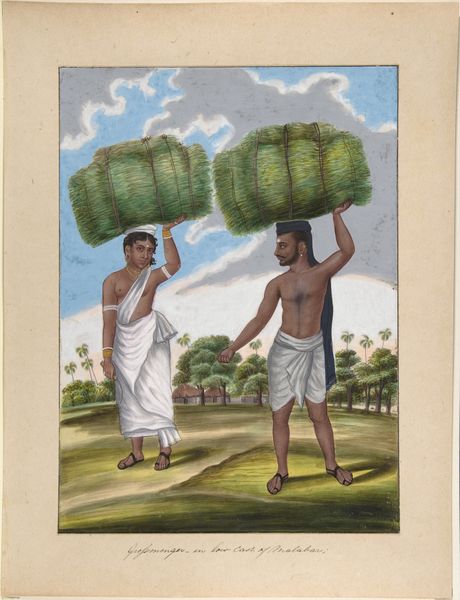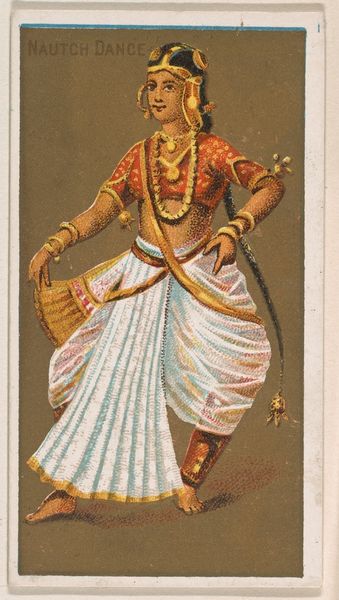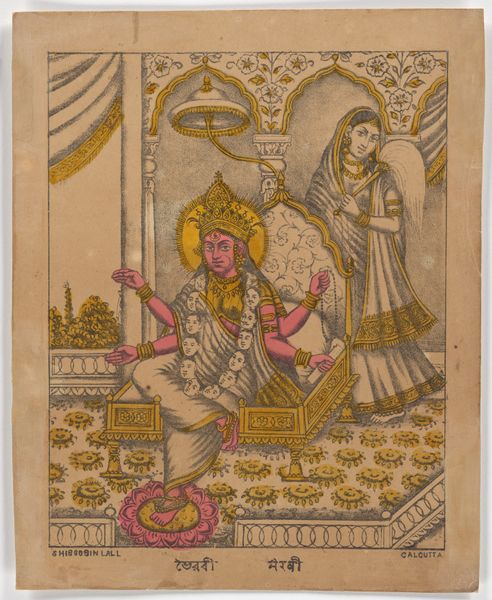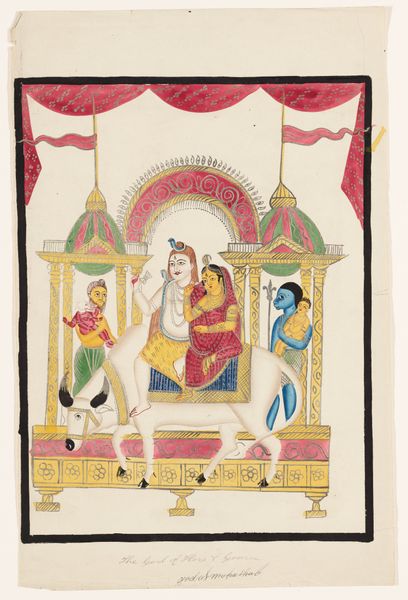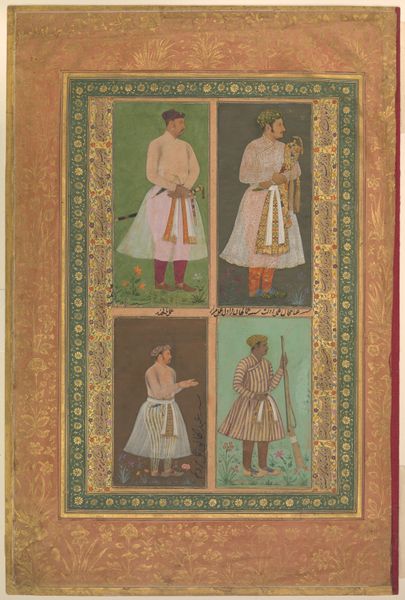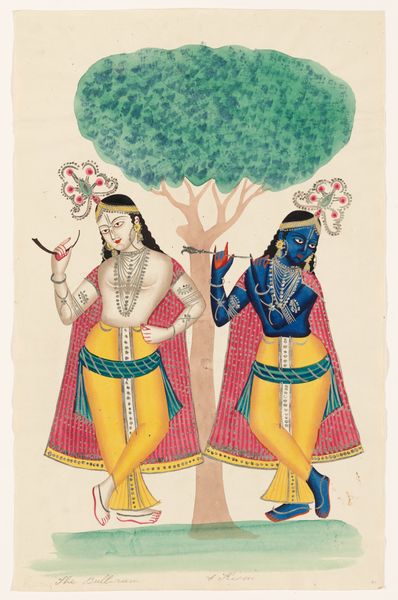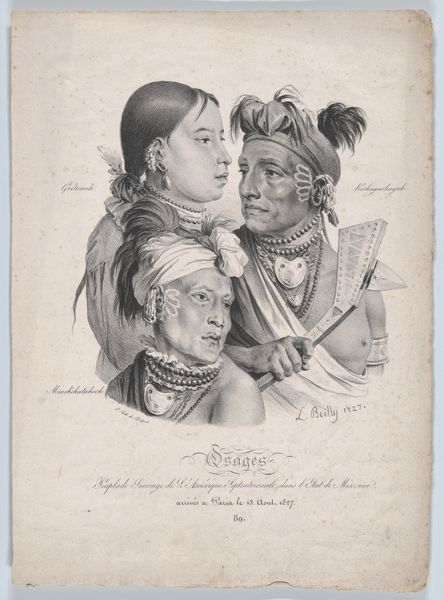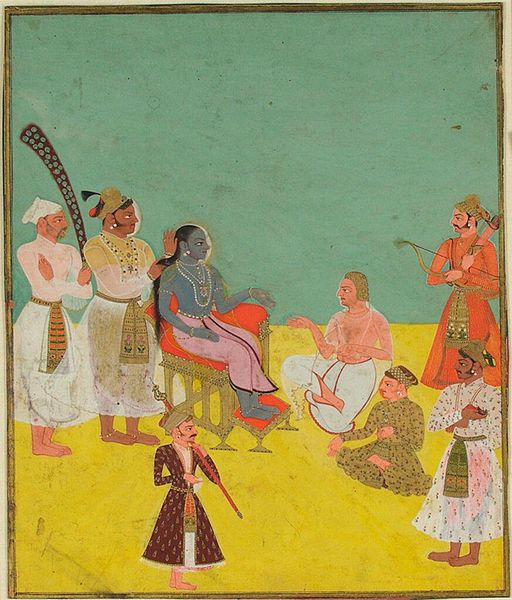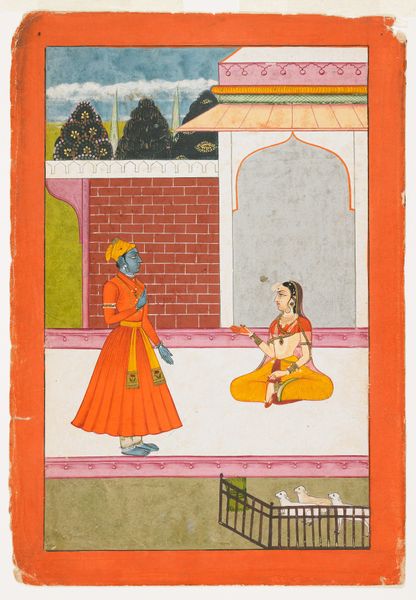
A Banker in Barry Selly Cast, from Indian Trades and Castes 1835 - 1845
0:00
0:00
painting, watercolor
#
portrait
#
painting
#
asian-art
#
figuration
#
watercolor
#
men
#
watercolour illustration
Dimensions: sheet: 14 3/8 x 10 3/8 in. (36.5 x 26.4 cm) mount: 18 1/4 x 14 1/4 in. (46.4 x 36.2 cm)
Copyright: Public Domain
Curator: The artwork before us, made with watercolor, is titled "A Banker in Barry Selly Cast, from Indian Trades and Castes." It was created sometime between 1835 and 1845. Editor: The immediate impression is one of studied stillness. It's a carefully arranged portrait; there's something almost photographic about the posing. It feels…removed from direct engagement. Curator: It's important to remember the context: These "Company Paintings," as they're sometimes known, were often commissioned by British officials seeking a record of Indian society. So the representation becomes a collaboration, but also an imposition. The power dynamic is baked into the art. Editor: Yes, the visual vocabulary tells us so much about how cultures perceive each other. Note the banker's garments— the stark white dhoti contrasting with the muted colors of the woman’s sari. What symbolic weight do those colors carry, signaling social standing, perhaps? The colors appear faded like they may signify tradition. Curator: I wonder about the portrayal of the woman. Her downcast gaze and posture—does it reflect an internal reality, or is she being positioned within a colonial gaze, silenced and objectified? The gesture toward her face has many interpretations, too. Editor: And look at the background—palm trees, simple houses, puffy clouds. They evoke an almost Edenic quality, an idealized landscape. But there is little movement which creates some unsettling questions for me. Curator: Absolutely. And considering its time, who decided which elements would populate it, how each person was framed—these were acts laden with cultural and political intent. This makes the painting's visuality more significant to consider within systems of power that are beyond the immediate aesthetics of the artwork itself. Editor: I concur; it speaks to a visual cataloging, a project of colonial knowledge-gathering. It's about fixing identity in place. And this careful detail emphasizes that agenda. It begs the question: what’s deliberately shown, and more importantly, what is omitted from our view? Curator: Examining art through the lens of intersectionality and coloniality is essential. This seemingly straightforward genre scene, when unpacked, reveals much more about historical narratives than initially meets the eye. Editor: A potent reminder of how images not only reflect, but actively shape our understanding of complex social realities. These historical nuances transform what seems initially posed or quaint into a profound visual record, really.
Comments
No comments
Be the first to comment and join the conversation on the ultimate creative platform.
